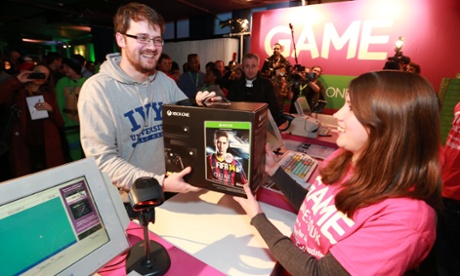
Microsoft is releasing a cut-price version of its Xbox One console which excludes the Kinect motion-tracking system, to match the price of Sony's PlayStation 4.
The new console version will cost $399/£349 and go on sale from 9 June as the latest stage in the console war heats up.
It marks a departure from Microsoft's initial insistence that it would make the Kinect part of the default setup for the Xbox so that games developers could target it for development. Instead, it seems to have decided to fight on price rather than features.
Microsoft has shipped 5m Xbox Ones globally since November, while Sony has sold more than 7m PS4s in the same time, giving it the lead in the all-important install base which console manufacturers need to attract key developers to their platform.
The difference in sales of the Xbox One and PS4 has been put down to cost. The PS4 was launched without Sony’s motion-tracking PlayStation Camera at a price of $399/£349, $100/£80 cheaper than the Xbox One with Kinect. The PlayStation Camera was available as a $60/£50 optional extra.
End of mandatory Kinect
At its launch, Microsoft said that shipping every Xbox One with Kinect would make the motion-tracking system the "default state" of play, so that game developers could take advantage of it.
On Tuesday, Microsoft reiterated its commitment to Kinect, with Phil Spencer, its head of Xbox, saying in a blogpost that “Kinect remains an important part of our vision” and that more than 80% of Xbox One owners used it actively. “Many of you are using Kinect for Xbox One every day," Spencer said, claiming that there were an average of 120 voice commands per month on each console – which would be an average of four per day.
“We will continue to offer a premium Xbox One with Kinect bundle to deliver voice and gesture controls, biometric sign-in, instant personalisation, instant scanning of QR codes, and enhanced features only available with Kinect in games such as Kinect Sports Rivals, Just Dance 2014, Project Spark and more."
A standalone Kinect system will be offered at a later date so that buyers of the Kinect-free Xbox One can buy it as an accessory.
The Kinect was originally offered as an add-on for the Xbox 360 in November 2010, and it sold 8m units in its first 60 days, making it the fastest-selling consumer electronics device ever. But sales slowed after that point, and total sales hit 24m by February 2013, against a total of 76m Xbox 360 units sold.
• Hands-on with the future of console gaming – Sony's PlayStation 4 virtual reality headset

